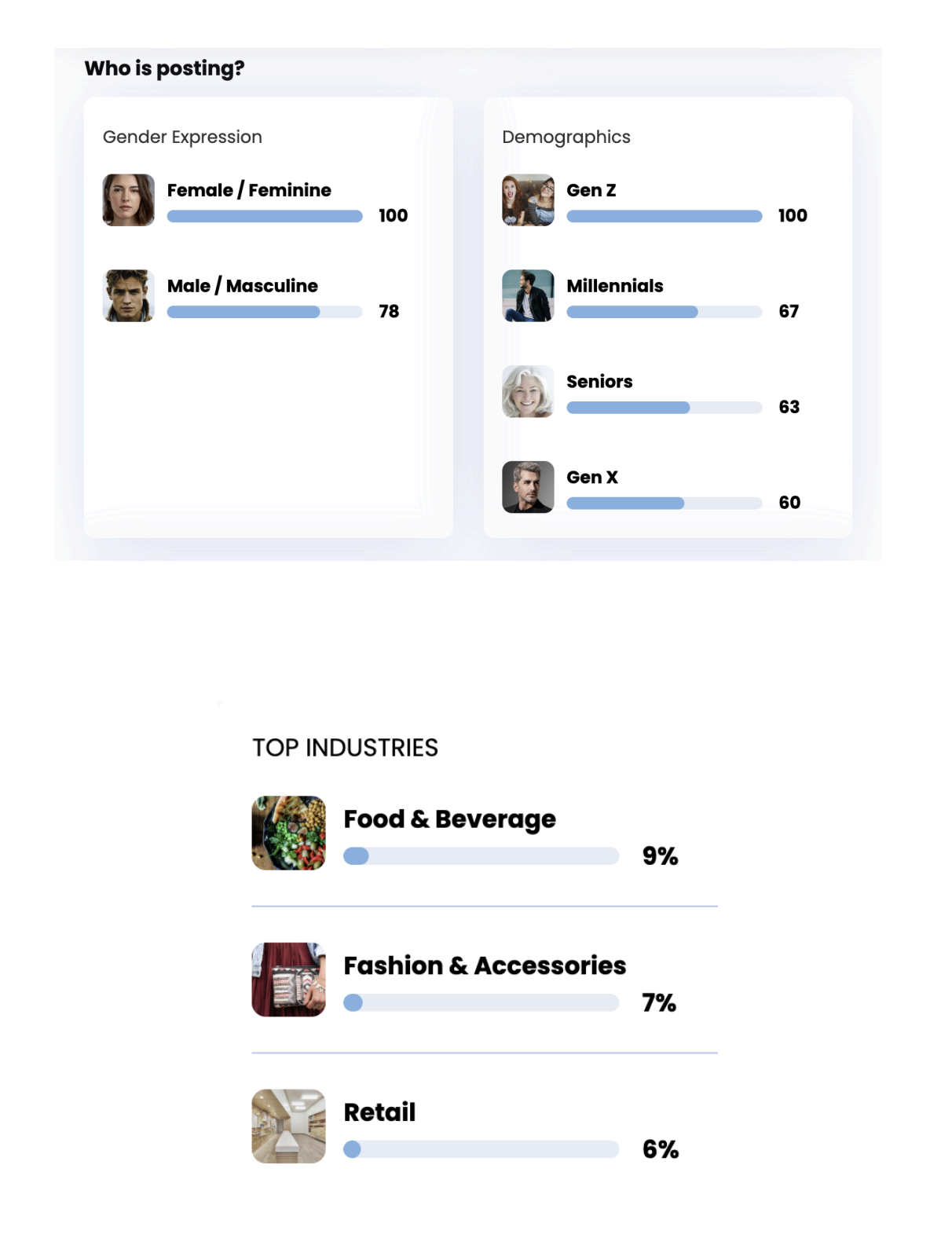Sustainability in the Post-Global Era
In the aftermath of decades of global integration, the model of hyperconnected markets is showing signs of retreat. Geopolitical instability, trade disputes, and resource scarcity are catalysing a structural shift that could reshape not only economies, but the very principles underpinning sustainability. Drawing from trend intelligence by Nextatlas, two pivotal developments emerge, developments that invite foresight professionals to rethink sustainability not as a static ideal, but as a dynamic field responsive to systemic transformation.
The post-global era is not simply a reconfiguration of trade routes or supply chains; it marks a fundamental reframing of what society deems “sustainable.” In a world where inflation, scarcity, and volatility dominate headlines, environmental goals are becoming increasingly intertwined with economic and geopolitical concerns.
Nowhere is this reframing more evident than in the European Union, which has positioned itself as a global leader in linking sustainability with regulatory and economic frameworks. Through initiatives such as the European Green Deal, the Carbon Border Adjustment Mechanism, and stricter ESG reporting standards, the EU is setting benchmarks that extend far beyond its borders and reshape how sustainability is understood in practice.
Nextatlas’ foresight model suggests a pivot: environmental degradation is no longer perceived as the singular sustainability threat. Instead, resource access, economic resilience, and supply chain transparency are becoming the new fault lines. This conclusion is grounded in more than a decade of Nextatlas’ machine learning work in cultural trend forecasting, built on a proprietary pipeline that ingests millions of data points each month from over 300,000 carefully selected sources, including social media users, niche influencers, scientific literature, design portfolios, and startup ecosystems.
Through natural language processing, semantic clustering, and visual analysis, these unstructured signals are structured into a dynamic semantic knowledge graph of thousands of interconnected micro-trends. By identifying early adopters with a demonstrated history of trend foresight, the model captures weak signals and emergent cultural dynamics before they reach the mainstream. With a 93% accuracy rate in trend prediction, this methodology provides a robust foundation for understanding the evolution from ecological awareness as individual virtue to sustainability as collective infrastructure.
The Wasteless Economy
The intentional rejection of overconsumption
What was once framed as consumer minimalism is evolving into a more resilient, system-conscious behaviour: the Wasteless Economy. As global citizens face the tangible consequences of rising costs and diminished availability, consumption habits are adjusting accordingly. But unlike past recessions where thrift was reactive, today’s restraint is increasingly proactive and value-driven. In this new context, value is redefined by longevity, utility, and purpose. Careful selection, durability, and circular practices now consciously outweigh constant acquisition.
This transformation has implications beyond market dynamics. It reflects a recalibration of what constitutes value and well-being in an era of systemic constraint. The Wasteless Economy aligns closely with long-term sustainability goals, emphasising durability, circularity, and resource efficiency, not just as ethical choices, but as strategies for social and economic stability. Amid persistent inflation and renewed tariffs on consumer goods, households are tightening their belts and are naturally drawn to buying less, buying smarter, and investing in lasting value.
Feeling the squeeze of both rising operational costs and evolving regulations, businesses are pivoting toward circular models, designing for durability, repairability, and reuse, not for sustainability branding, but as a smart financial strategy. Circular design reduces exposure to volatile supply chains and tariff-prone imports, while reinforcing consumer loyalty through accountability.
This shift is most visible in food & beverage, fashion, and retail, industries where overproduction and disposability once defined the norm. Food companies must now design out surplus, embracing precision, seasonality, and resourcefulness as new standards of value. In fashion, longevity and modularity are replacing trend cycles, with resale and repair moving from fringe to fundamental. Retailers, in turn, are being called to transform from providers of endless choice into curators of care, offering fewer but better options that align with the values of restraint and longevity.
For foresight practitioners, the shift underscores a key signal: in strained environments, sustainability flourishes not through moral appeal but through necessity. Efforts to design policy or governance around future-proofed systems must therefore centre not only on carbon metrics, but also on material longevity, repair ecosystems, and new models of sufficiency.

The Imperative of Transparency
Sustainability’s evolution from branding to verification
Transparency is becoming a legal, cultural, and technological expectation for private enterprise. From France’s recent fast fashion legislation to the EU’s push for Digital Product Passports (DPPs), accountability is now embedded in policy instruments.
Sustainability used to be symbolised by green logos or “eco-friendly” labels. Today, consumers have moved past basic messaging and want to know what the materials are, where they came from, how they were used in the production process, and their carbon impact. Transparency is now the evidence layer of sustainability; it gives people the means to judge ethical alignment, not just accept corporate messaging. Transparency connects sustainability to economic justice, worker rights, and accountability, making the act of purchasing inherently political and values-based.
The broader foresight implication is that sustainability is shifting from a narrative framework to a measurable, auditable infrastructure. Consumers are demanding not only clearer labels, but deeper visibility into supply chains, emissions footprints, labour practices, and lifecycle impacts. This transformation situates sustainability within broader discourses of justice, equity, and trust more than ever before, especially impacting industries where these values are most expressed by consumers, such as beauty and technology.
As tariff changes bring supply chains into public consciousness in a way previously unseen in modern times, choices that reflect values, especially climate resilience, equity, and integrity, become paramount. This supports a growing values-driven economy, where consumers act as watchdogs and advocates through social media and online campaigns, ever responsive to companies, products or marketing campaigns that don’t meet the mark. It also explains why sustainability still matters, even during economic uncertainty.
In future thinking, transparency functions as a foundational pillar of systemic resilience. It empowers both consumers and institutions to make decisions that are data-informed and values-aligned. Whether through civic regulation of labour practices or AI-driven traceability systems in supply chains, we are seeing the early stages of a world where opaque systems are increasingly untenable.

Implications for Policy and Foresight
To keep pace with these shifts, sustainability frameworks must evolve beyond traditional carbon footprint metrics. Future-oriented strategies should integrate indicators such as equitable access to resources, the development of circular infrastructure, and the adaptability of systems under both economic and environmental stress. Longevity, seasonality, and resourcefulness are emerging as new markers of value in an increasingly strained global system. These dimensions reflect a new and broader understanding of sustainability as resilience in the face of systemic economic shocks.
For Europe in particular, this reorientation resonates with ongoing policy debates. The European Union has already embedded resilience into its strategic agenda through the Green Deal, the Circular Economy Action Plan, and the Fit for 55 package, yet these initiatives now face the challenge of integrating sufficiency and systemic durability alongside decarbonisation. Anticipatory governance in the EU will therefore need to reckon not only with ecological boundaries but also with the lived experience of scarcity. This means prioritising sufficiency and longevity over abundance, encouraging localised solutions, and supporting durability in both products and policies. Rather than focusing solely on environmental targets, future European systems should be designed to thrive amid constraints, turning production and consumption into investments in long-term value.
At the regulatory level, there is growing evidence that lawmaking itself is becoming a tool of foresight, as institutions reshape policies in line with long-term societal signals. The EU’s Digital Product Passport and the forthcoming Ecodesign for Sustainable Products Regulation demonstrate how European policymaking is actively embedding traceability, repairability, and circularity into market rules. These measures, alongside national experiments such as France’s recent regulation on fast fashion, highlight how the European policy environment is translating weak signals into binding frameworks. Scaling this approach across high-impact sectors such as food, textiles, and technology will be essential for Europe’s ability to lead globally while safeguarding its own resilience.
Finally, trust will become a defining strategic asset in the years ahead. As consumers and citizens demand greater accountability, institutions that embrace transparency and invest in traceability will be better positioned to lead. In a world where legitimacy hinges on openness, building systems of trust is now a priority for true sustainability, and not just an ethical imperative.
The emerging face of sustainability is less about optics and more about operating systems. As the world shifts toward economic self-reliance and socio-political fragmentation, sustainability is adapting, moving from an external ideal to an embedded principle of resilience, equity, and systemic care. For those working at the intersection of futures studies, policy, and innovation, the trends explored here are both market signals and early indicators of how societies — and the European project itself — might thrive in an upcoming age of limits.
Resources: Nextatlas' "In the Post-Global Economy, Is Sustainability Still Essential?" free trend report


